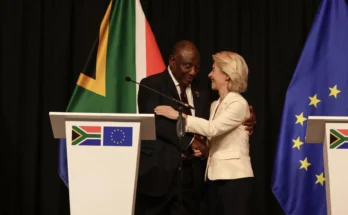The reduced army and territory were ceded to Russia. According to Politico, these would be some of the “significant concessions” Ukraine would have to accept under the 28-point peace plan with Moscow unveiled for the first time by Axios and which American President Donald Trump has signed and sent to Kiev.
However, informed sources cited by Politico on condition of anonymity stated that the terms of the plan are still subject to negotiation, while NATO’s role remains to be clarified, which has not yet been determined by American officials. The reduction of Ukraine’s armed forces is not yet an established fact, nor is the transfer of the entire Donbass to Moscow.
Ukraine has asked to join the Atlantic Alliance as a security guarantee against a future Russian invasion, while Moscow considers this hypothesis a threat and the United States does not support Ukraine’s request.
Based on what happened, Russia’s request was the same as one that US Secretary of State Marco Rubio had rejected, a source familiar with the matter said. Among them, Moscow demands control of more territory in eastern Ukraine than it captured during the war and that Kiev neglected to protect its Western allies in terms of security.
US Army Secretary Dan Driscoll, Chief of Staff General Randy George and US Army Europe Commander General Christopher Donahue met with Ukrainian President Volodymyr Zelensky in Kiev.
Driscoll, known as the “drone man” as Trump dubbed him, has the job of providing NATO allies with updates on the plans and what the US believes is the path to follow, the source added.
Trump bets on white smoke
Meanwhile, the White House appears optimistic. As Politico reported, a senior administration official believes an agreement on the plan could be reached by the end of this month, or ”as early as this week,” but both sides must show flexibility. Kiev has so far made no official statement on the plans, but Ukrainian and European officials have long been concerned about the country’s approach to the conflict.American envoy Steve Witkoff, who seeks to promote a path to peace between Ukraine and Russia.
According to a person familiar with the matter, the involvement of the Trump administration’s peace envoy, who served as Moscow’s interlocutor, began late last month, when he met with Russian special envoy Kirill Dmitriev in Miami, just as Trump’s hopes of meeting with Russian President Vladimir Putin were dashed.
Politico outlines how Ukrainian and European officials were shocked when they learned of the plan Witkoff also because they feel Trump is finally starting to realize Putin’s lack of sincerity and desire to reach a deal, two informed sources cited by Politico said.
Furthermore, according to Politico, a number of officials believe that Witkoff’s tendency to work alone is the cause of the failure of the US government’s peace efforts so far. Witkoff’s refusal to consult with allies, for example, sometimes left him uninformed or unprepared. Furthermore, officials still believe Witkoff was misled by Russia about the nature of the conflict and Putin’s true goals.
“Russia has clearly identified Witkoff as someone willing to advance their interests,” said an EU defense official quoted by Politico. “The European side was not consulted on this issue. But there is a group in the White House that has long considered Europe a ‘killer’ in the peace process, so in some ways this is not surprising,” the source added.
A second White House official later dismissed concerns that Moscow would only work with Witkoff to end the war. But a source cited by Politico explained that Witkoff’s plan includes “no interagency coordination,” meaning it ignores the usual input from relevant departments across Washington’s government.



